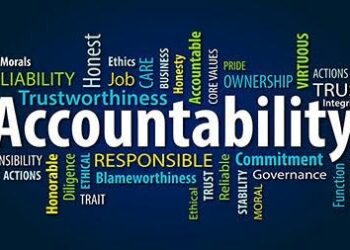In today’s dynamic business landscape, meetings play a pivotal role in decision-making, ideation, and tracking team progress. However, far too often, these gatherings devolve into unproductive time sinks that lack engagement and fail to deliver results. But fear not! With the right approach, you can elevate your meetings into impactful forums that inspire and energise your team. Today, we unveil the strategies for managing effective meetings tailored to the demands of senior executives.
The Blueprint For Success: Thoughtfully Planned Meetings
Before sending out a meeting invitation, it is crucial to establish clear objectives. What specific outcomes do you seek? By articulating the purpose and objectives from the outset, you lay the foundation for a focused and productive meeting. This clarity not only aligns expectations but also underscores the value of the gathering for participants.
Next, craft a meticulously designed agenda—a linchpin for successful meetings. The agenda acts as a compass, guiding discussions and ensuring efficient use of time. Sharing the agenda with participants in advance empowers them to come prepared, bringing their expertise and insights to the table. This approach maximises engagement and active involvement.
Timing Is Everything: Maximising Senior Executive Participation
We have all experienced meetings where half the attendees seemed disengaged or fatigued. Carefully selecting the meeting time is paramount to optimising participation and engagement. Avoid early mornings or late afternoons when energy levels may wane. Instead, find a time when all participants are at their peak, ready to contribute their best. Additionally, consider individual schedules and availability to accommodate the high-level commitments of senior executives.
The Guest List: Curating the Right Participants
The success of a meeting hinges on having the right people in the room. Inviting too many or too few individuals, or including the wrong ones, can impede progress. Evaluate the agenda and identify key roles necessary for fruitful discussions. Extend invitations to those who can provide valuable insights or make critical decisions. Encourage attendees to delegate their presence to a qualified substitute if they are unable to attend, ensuring that the meeting benefits from the relevant voices.
Setting The Stage: Creating An Engaging Executive Environment
Imagine a meeting room with uncomfortable seating and distracting lighting—hardly conducive to fruitful discussions. Creating a comfortable and engaging atmosphere is essential to sharpening participants’ focus and involvement. Whether in person or virtual, pay careful attention to the physical environment. Test equipment beforehand, minimise disruptions, and ensure that the surroundings align with the meeting’s purpose and tone. A comfortable environment sets the stage for meaningful collaboration at the executive level.
Tick-Tock: Mastering Time Management
Time is a precious resource, and this holds particularly true for senior executives. Starting and ending meetings punctually demonstrates respect for participants’ schedules, conveying that their time is valued. Adhere to the agenda and guard against unproductive tangents. If a topic necessitates further exploration, propose a follow-up session to maintain engagement while safeguarding overall productivity.
The Power Of Participation: Fostering Engaged Dialogue
An effective meeting is one in which every voice is heard, ideas are shared, and diverse perspectives are embraced. Foster an inclusive atmosphere that encourages active participation from senior executives. Acknowledge and appreciate all opinions, cultivating an environment where ideas can thrive. Avoid dismissing imperfect ideas; instead, provide constructive feedback and seek clarification when necessary. Consider incorporating interactive activities, targeted brainstorming sessions, or one-on-one discussions to empower each participant to contribute their valuable insights.
A Picture Is Worth A Thousand Words: Visuals And Documentation
Recognising that individuals absorb information differently, incorporating visuals can significantly enhance comprehension and retention. Prepare visually impactful materials that support your discussions and provide clarity. Visual aids help senior executives grasp complex concepts, facilitating better recall of the meeting’s purpose and objectives. Additionally, document the discussions and decisions made during the meeting. These records serve as a vital resource for subsequent meetings, clearly delineating tasks and fostering accountability.
Seize The Power Of Effective Meetings
By following these tried-and-true strategies, you can transform your meetings into dynamic platforms that drive collaboration and productivity among senior executives. Establish clear objectives, craft comprehensive agendas, and curate the right participants. Create a comfortable environment, master time management, and foster active participation. Leverage visuals and documentation to enhance understanding and facilitate follow-up action. Equipped with these tools, your meetings will evolve into powerful catalysts propelling your team towards exceptional achievements.
Are you ready to unlock the full potential of your meetings? Step into the realm of effective meeting management and witness the transformation firsthand. Your team will express their gratitude, and your organization will reap the rewards of seamless collaboration and extraordinary accomplishments. The stage is set—now, embrace your role as a leader and guide your team to unparalleled success through the art of effective meetings.





